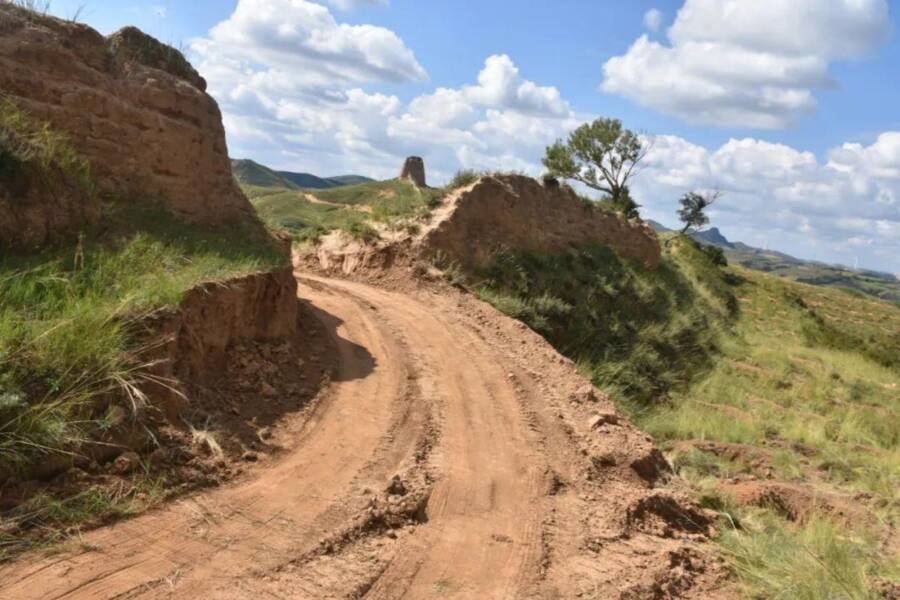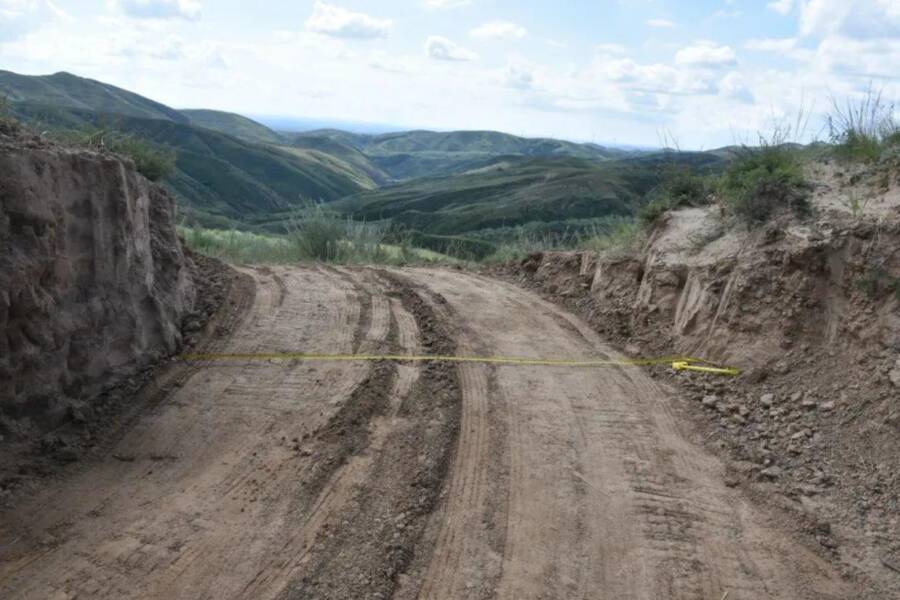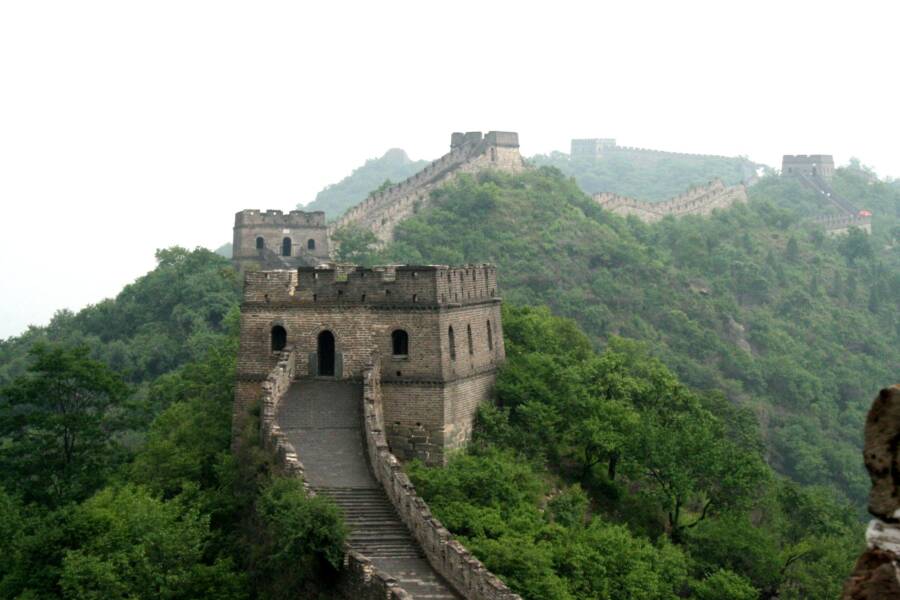The section of wall was a well-preserved section of the 32nd Ming Great Wall, of which nearly 30 percent has already been lost to time.

Youyu County Public Security BureauA section of the Great Wall in Youyu County, China, where workers allegedly destroyed a portion of the wall with an excavator.
Two construction workers in China have been arrested after allegedly causing irreparable damage to a portion of the country’s Great Wall. According to local police, the two suspects — a 38-year-old man with the surname Zheng and a 55-year-old woman with the surname Wang — were working a construction job nearby.
According to state-run news outlet China Daily, police in Youyu found the damage on August 24, and followed the trail of tracks left by the team’s excavator to the neighboring county of Horinger.
There, they found the two suspects, who reportedly admitted to using the excavator to knock down a portion of the wall, creating a shortcut and saving them time going around it.
They were taken into custody and charged with destroying a cultural relic.

Although the Great Wall has only been classified as a UNESCO World Heritage Site since 1987, the BBC reports that the sprawling wall itself has been around since roughly 220 B.C.E., and construction — and reconstruction — on it went on through the Ming Dynasty in the 1600s.

Youyu County Public Security BureauOlder sections of the Great Wall were nothing more than rammed earth walls and now look more like mounds than anything.
These more recent sections, created during the Ming Dynasty between the 14th and 17th centuries, are perhaps unsurprisingly the most well-preserved. The section of the wall destroyed by the construction workers also happened to be a well-preserved Ming Dynasty portion.
However, what we may commonly think of as “The Great Wall of China” is not necessarily the full picture. Certainly, there are sections of the Great Wall that do look like a great wall — that is, layers of stone and brick connecting various battlements — but there are also numerous portions of the Great Wall that now look like simple dirt mounds.
The reason for this is that earlier portions of the wall — those sections that date back thousands of years — were fairly simple in their construction. They were largely just rammed earth walls. Over time, these portions have naturally degraded.
But even portions of the Great Wall that are more elaborate in structure have varying states of disrepair. More tourist-grabbing sections, such as those near Beijing, for example, are well-kept, but much of the Great Wall spreads across remote and relatively uninhabited portions of the country.

Robin Zebrowski/Flickr Creative CommonsA more recent section of the Great Wall of China.
In these more remote regions, and especially where the Great Wall passes by small villages and farms, it was not entirely uncommon for farmers to steal stone bricks from the wall and use them for housing projects or animal pens.
This practice was in fact so common that in 2016 the newspaper Beijing Times reported that 30 percent of the Ming Great Wall has disappeared completely. Of course, this can’t be entirely attributed to thieving farmers, as it has also weathered centuries of natural and human damage.
Today, only about eight percent of the Ming Great Wall is considered to be well-preserved. Because of this, China’s Great Wall has been listed by the World Monuments Fund as one of the 100 most endangered sites in the world.
In recent years, the Chinese government has made a harder push for the Great Wall’s preservation, with several regulations and government programs first being introduced in the early 1960s.
So, while the construction workers’ alleged actions may not seem particularly unusual in China, many feel there is perhaps more reason now than ever to prioritize the preservation of one of the world’s most valuable cultural relics.
After reading about this damage caused to the Great Wall, read about the time a hapless driver backed his car into the oldest toilet in Japan. Or, learn more about Chinese history by reading about the life of Qin Shi Huang, the emperor who unified China and built an army out of clay.





